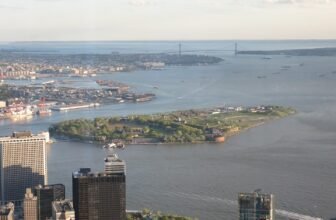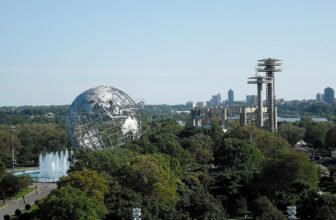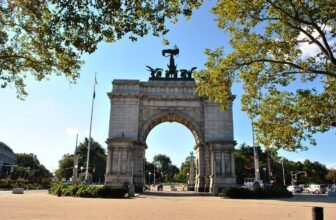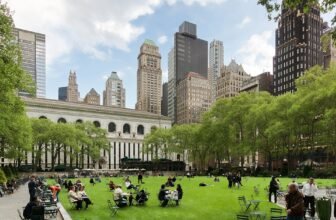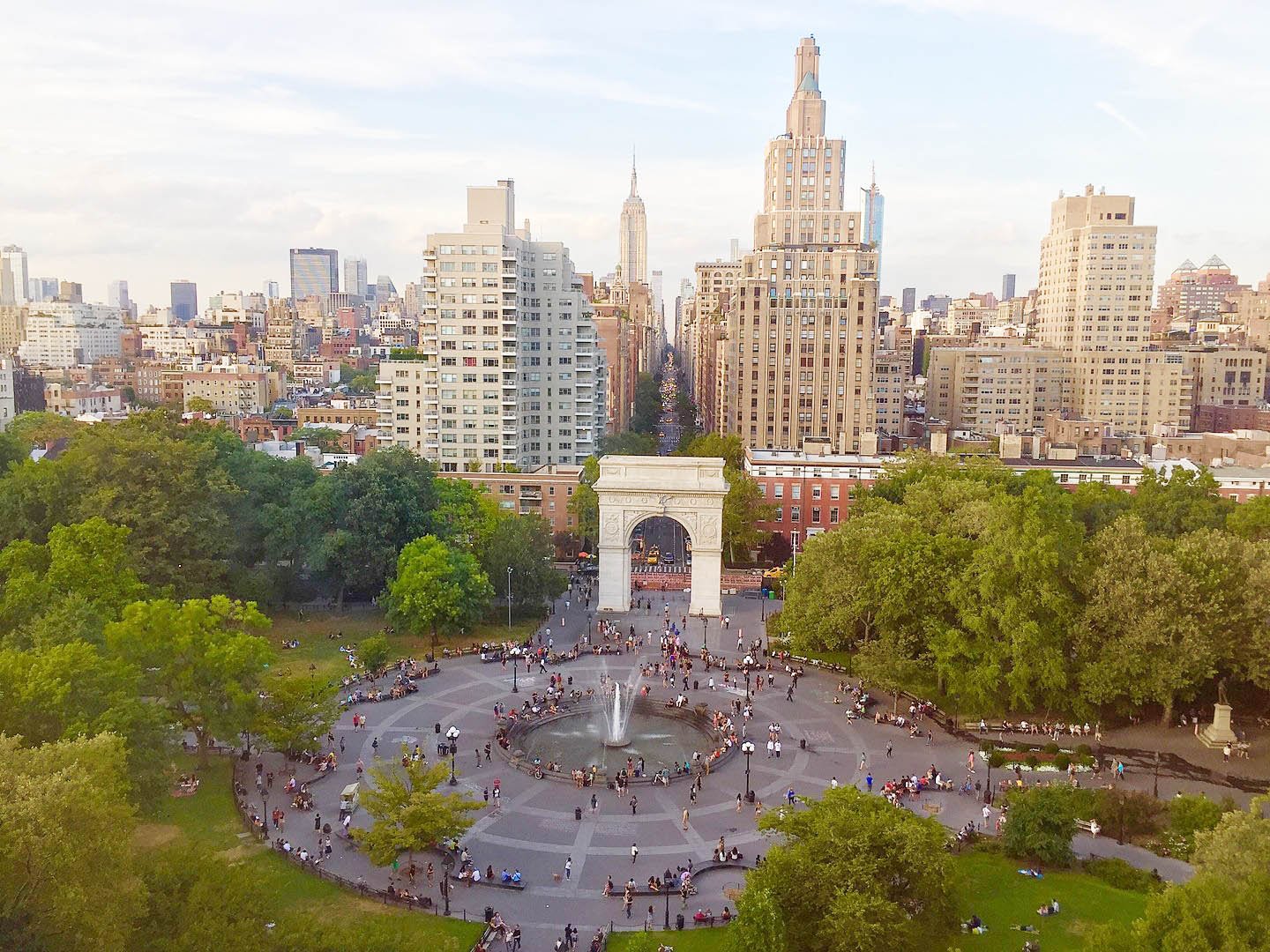
Discovering the Soul of Greenwich Village: A Journey Through Washington Square Park
There’s a rhythm to New York City, frenetic, electric, unyielding. But amid the towering steel and streaming avenues, there’s a place where time seems to slow, a heartbeat that pulses differently: Washington Square Park.
Set at the heart of Greenwich Village, this 9.75-acre green space is more than just a park, it’s a cultural landmark, a gathering ground, a chessboard of intellect and artistry, and a sanctuary for both locals and dreamers. Whether you’re a curious traveler, a lifelong New Yorker, or an eager NYU freshman, Washington Square Park is where the city reveals its soul.
What Is Washington Square Park Famous For?
Washington Square Park is famous for its iconic Washington Arch, vibrant street life, deep roots in political activism, and status as the unofficial quad of New York University. But its fame transcends any single symbol or snapshot.
The Arch: A Marble Tribute
The grand Washington Square Arch, modeled after the Arc de Triomphe in Paris, was erected in 1892 to commemorate the centennial of George Washington’s inauguration as the first U.S. president. Towering at 77 feet, it’s not just a visual anchor, it’s a gathering place. You’ll often find musicians performing beneath it, artists sketching passersby, and couples exchanging vows beneath its elegant curves.
A Playground of Culture
What makes Washington Square Park so legendary isn’t just its landmarks, it’s the life that pulses through it. The park has long been a beacon for free expression, from Beat poets and folk singers of the 1950s and ‘60s to modern-day street performers and social justice movements.
Here, Bob Dylan strummed his early chords, chess hustlers still challenge newcomers by the fountain, and public protests light the air with chants of change. It’s not unusual to witness a dance battle beside a Shakespearean soliloquy or a saxophone duet in perfect harmony with skateboard wheels hitting pavement.
What to Do Near Washington Square Park
The park itself is a destination, but its surroundings are equally rich in experiences. Within just a few blocks, you can dive into some of the most iconic, eclectic, and charming parts of Manhattan.
1. Explore Greenwich Village
Step outside the park, and you’re in the Village. This neighborhood, once a bohemian haven, is now a beautiful blend of upscale boutiques, intimate jazz clubs, and historic brownstones.
-
MacDougal Street: Just west of the park, this buzzing street is lined with old-school eateries, comedy clubs, and music joints. Check out Caffe Reggio, which claims to have served the first cappuccino in America.
-
Comedy Cellar: One of the best places in NYC to catch top-tier stand-up comedy. You never know when a big-name comedian might drop in unannounced.
2. Visit NYU Landmarks
NYU’s urban campus surrounds the park, and a walk through its halls and buildings offers insight into one of the most influential academic institutions in the world. Don’t miss the Grey Art Gallery and Bobst Library.
3. Eat and Drink Like a Local
Washington Square is ringed by culinary gems:
-
Joe’s Pizza (Carmine Street): Iconic NYC slice.
-
Mamoun’s Falafel: A Village institution since 1971.
-
Minetta Tavern: Upscale and storied, their Black Label burger is legendary.
4. SoHo and NoHo
A short stroll east or south will land you in SoHo and NoHo, where cobblestone streets meet high-end shopping, boutique galleries, and some of the city’s finest cafés and brunch spots.
How Long Does It Take to Walk Around Washington Square Park?
Washington Square Park isn’t massive, just under 10 acres, but it’s densely packed with character.
The Walk
If you walk the perimeter at a casual pace, it takes about 15 to 20 minutes. But this walk isn’t just about distance, it’s about absorption. Each corner of the park invites a pause:
-
Watch jazz performers by the central fountain.
-
Observe heated matches at the chess tables near the southwest corner.
-
Admire the dog runs (yes, there are two, one for small dogs and one for large!).
-
Enjoy a leisurely read on a bench shaded by stately oaks.
So while the walk might be quick, you’ll likely find yourself lingering for an hour, or an afternoon.
Why Is It Called Washington Square Park?
The park is named in honor of George Washington, the first president of the United States, and the area has a long, complex history.
A Past with Depth
Before it became a park, the land was used as:
-
A potter’s field (public burial ground) in the late 18th century.
-
A military parade ground in the early 19th century.
In 1826, it was officially designated a public park, and in 1889, to mark the centennial of George Washington’s inauguration, a temporary arch was erected. The permanent marble Washington Arch, designed by Stanford White, followed in 1892.
Interestingly, the name “Washington Square” represents not just the president himself, but the ideals of American identity and democracy, a fitting moniker for a place so central to public discourse and artistic expression.
What Is the Cute Street Near Washington Square Park?
There are many lovely streets nearby, but perhaps the cutest and most beloved is Washington Mews.
Washington Mews: A Secret European Lane
Just north of the park, between Fifth Avenue and University Place, lies a cobblestone lane flanked by quaint carriage houses, now repurposed into NYU faculty offices and artist studios. Once private stables in the 19th century, these buildings retain their original facades, creating a serene, almost storybook vibe that feels worlds away from the city’s bustle.
A walk along Washington Mews offers a quiet, visually charming retreat, a favorite among photographers and romantics.
Other picturesque streets worth exploring include:
-
MacDougal Alley
-
Grove Street (with its famously tiny houses)
-
Waverly Place, which borders the park and boasts some historic architecture
Interesting Facts About Washington Square Park
Even longtime New Yorkers continue to discover new layers to this park. Here are some fascinating tidbits:
1. There Are Thousands of Bodies Beneath the Park
Yes, you read that right. As a former potter’s field, the park is estimated to contain the remains of over 20,000 people. In fact, during renovations in the 2000s, human remains were still being discovered beneath its soil.
2. A Tree Known as the “Hangman’s Elm”
In the northwest corner stands a towering English elm, believed to be over 300 years old, known as the Hangman’s Elm. Local legends suggest it was used for public executions, though historians debate the veracity of these claims.
3. Chess Culture
The southwest corner hosts the park’s famous chess tables, where hustlers and masters alike challenge passersby. Some players, like the legendary Vinnie Livermore, have been fixtures there for decades.
4. Fountain Fountains of Fame
The central fountain, reconstructed in 2007, is perfectly aligned with Fifth Avenue and the Arch. It becomes a magnet in the summer months for children, tourists, and impromptu performers. The fountain is often the heart of activism, flash mobs, and celebrations.
5. Protest History
Washington Square has long been a site of protest, from labor rights marches and civil rights sit-ins to recent rallies for racial justice and LGBTQ+ rights. It’s a free speech zone in every sense.
6. It Was Almost a Highway
In the mid-20th century, Robert Moses famously tried to run a road straight through the park to extend Fifth Avenue. Jane Jacobs, an urban activist and Village resident, led a successful campaign to preserve the park as a public space. Her victory was a landmark moment in New York’s grassroots urban planning.
More Than a Park
To say that Washington Square Park is merely a patch of greenery in New York would be like saying that Broadway is just a street. This is a place where the city comes to reflect, rebel, and reimagine.
In a single afternoon, you might:
-
Hear the soulful notes of a saxophone echo under the arch
-
Watch a couple get engaged near the fountain
-
See a child feeding pigeons beside a man sketching portraits
-
Witness a protest march pass beneath fluttering rainbow flags
It’s a place of constant transformation, yet somehow it retains its identity, a microcosm of New York’s diversity, resilience, and creativity.
So, the next time you find yourself downtown, take that detour to Washington Square Park. Sit for a while. Watch the city unfold. Who knows, you might just find the very heartbeat of New York humming beside you.


